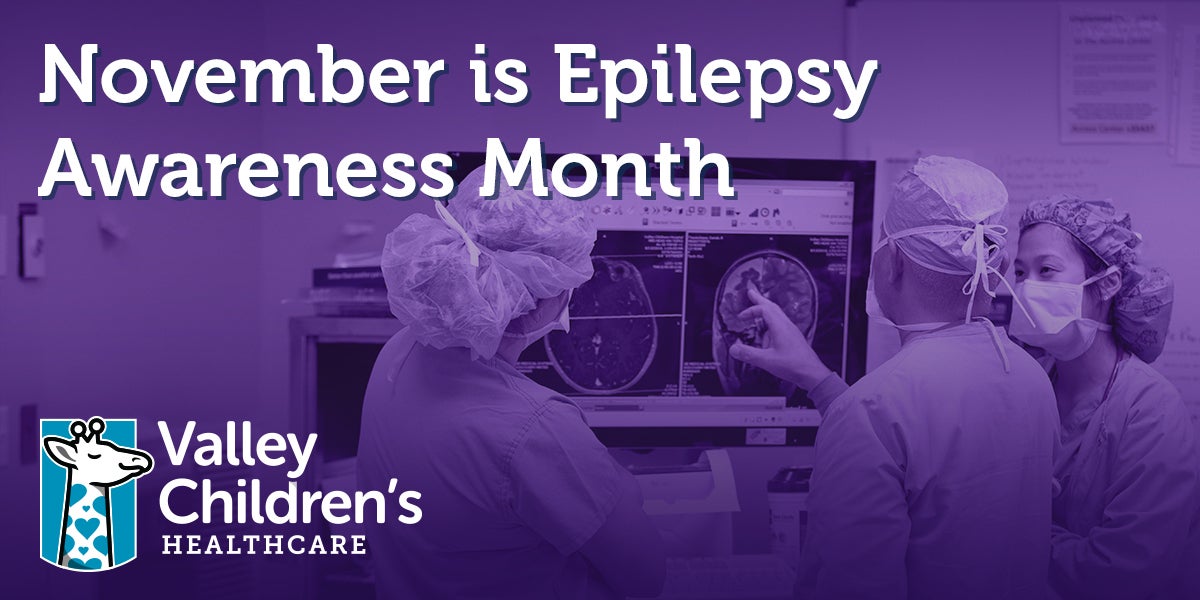What Is Epilepsy?
November 2, 2020

It’s estimated that four in every 1,000 people will be diagnosed with epilepsy. That amounts to approximately 5,000 children in Valley Children’s service area. In recognition of November as Epilepsy Awareness Month, Valley Children’s is working to raise awareness about this diagnosis and the innovative ways we’re working to treat kids affected by epilepsy right here in the Valley.
So what is a seizure?
The brain consists of nerve cells that send messages through a system of electrical activity. This electrical activity is happening all the time and controls everything, from thoughts to movements and body functions. A seizure takes place when communication between cells is interrupted by an abnormal burst of electrical activity in the brain, resulting in a physical reaction.
How it is a seizure different than an epilepsy diagnosis?
A person is diagnosed with epilepsy when they have two or more seizures that have no other known medical cause. Anyone, anywhere, can have a seizure. Many people assume that having a seizure looks like what we might traditionally see in media (a full body convulsion). It is important to know that seizures can look very different for each individual; seizures can be brief muscle jerks that look like unconscious habits, such as picking at clothing, or as if the person isn’t paying attention (like daydreaming).
How common is epilepsy?
Epilepsy is one of the world's oldest known medical conditions, and yet many people still do not understand it. One in 26 people are diagnosed with epilepsy in their lifetime, equating to more than 3 million people in the United States alone.
By learning more about epilepsy, we can reduce fear and misunderstanding within the community. In recognition of Epilepsy Awareness Month, help spread accurate information, ask questions and get informed.